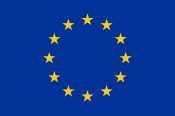The following English-language abstracts aim to provide snapshots of the individual case studies portrayed in the empirically developed German-language recommendations for action when dealing with sexualised violence using digital media (SVUDM) that originated from SRH University Heidelberg’s project HUMAN. Development of recommendations for pedagogical practice in dealing with sexualised violence using digital media.
With the start of the EU-funded follow-up project, Beyond Digital Violence (ByeDV), which focuses on application, implementation, discussion and analysis of the recommendations for action, it is important to provide broader insight and access to an international, and especially a European, community of practitioners and researchers. In doing so, the teams from SRH University Heidelberg and DGfPI are working together, not only with the five German counselling centres currently implementing the recommendations, but also with international colleagues, to reflect on the
applicability of the recommendations and considerations or modifications that may be necessary to adapt them for use by professionals across the EU. This is key in accomplishing ByeDV’s stated goal of disseminating an EU Blueprint that adapts the project’s quality criteria for broader use. Already, in describing the recommendations for action to international colleagues and peers, we have been able to engage in useful dialogues about national differences in the legal classification and consequences of various types of online behaviours, terminology, as well as the perceived need for distinguishing between online as opposed to offline sexualised violence when developing counselling approaches. The very nature of the virtual interactions inherent in SVUDM underscore the importance of approaching the subject from an international perspective. Perpetrators of Sexual Online Grooming (SOG) can be previously known or unknown to their victims, living down the street or in another country, and likewise, concerns about dissemination of exploitative abuse materials know no borders. It is our hope that this first step in making aspects of the recommendations
for action available to a broader audience will not only initiate a conversation to consider the nuances that online digital media can play in sexualized violence against children and adolescents, but also harmonise European approches to prevention and intervention.





